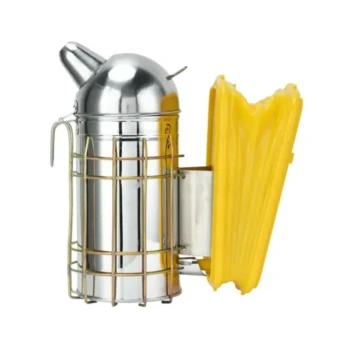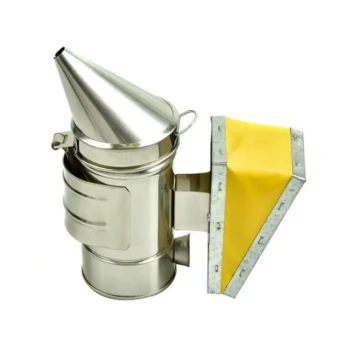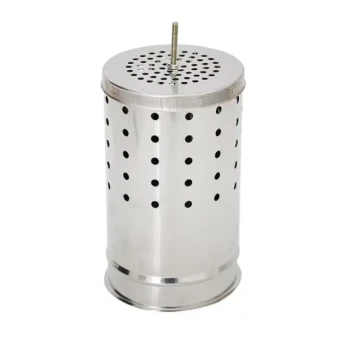Yes, smoke fundamentally alters bee behavior, but not by sedating them. It serves as a powerful tool for beekeepers by disrupting the bees' primary defense and communication systems. The smoke effectively masks the alarm pheromones that signal a threat and simultaneously triggers an instinctual feeding response, making the colony significantly calmer and less likely to sting.
Smoke doesn't harm or tranquilize bees; it redirects their priorities. By simulating a distant wildfire, it shifts their focus from colony defense to personal survival, making hive inspections safer for both the bees and the beekeeper.
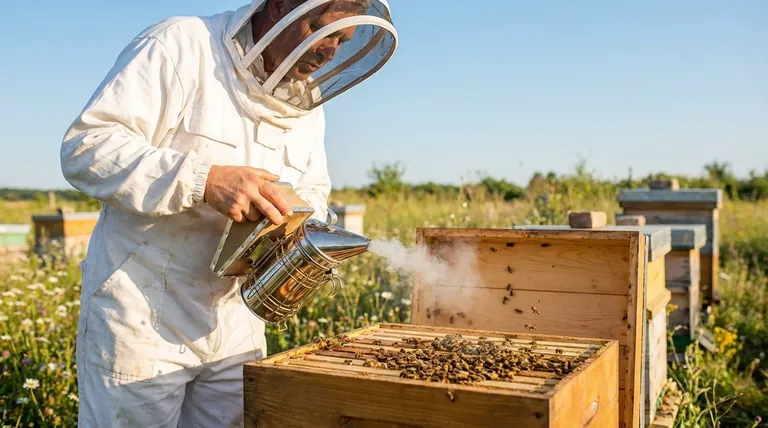
How Smoke Disrupts the Bee Defense System
To understand why smoke is so effective, we need to look at how it intercepts a bee colony's natural chain of command during a perceived threat.
H3: Masking the Alarm Pheromone
When a guard bee perceives a threat, it releases an alarm pheromone. This chemical signal instantly alerts other bees, triggering a coordinated defensive and aggressive response.
Smoke particles physically interfere with the bees' ability to detect this pheromone. The smoke molecules bind to the receptors on their antennae, effectively jamming the signal and preventing the alarm from spreading throughout the hive.
H3: Triggering a Primal Instinct
Bees have an instinctual response to smoke, which they associate with a potential wildfire threatening their home. This kicks their survival instincts into a different gear.
Instead of preparing to fight an intruder, their priority shifts to a potential evacuation. They begin to gorge on honey, storing as much of their most valuable resource as possible in case they need to abandon the hive.
H3: The "Full Belly" Effect
This feeding frenzy has a useful side effect. A bee with a crop full of honey finds it physically more difficult to curl its abdomen into the proper position to sting.
This distraction, combined with the physical limitation of being engorged, makes them far less inclined to attack. The colony becomes occupied and less agile.
Understanding the Trade-offs and Proper Use
While smoke is an invaluable tool, its effectiveness depends entirely on correct application. It is a method of influence, not brute force.
H3: Is Smoke Harmful to Bees?
When used correctly, smoke is not harmful to bees. The effects are temporary, with the bees' pheromone sensitivity typically returning within 10 to 20 minutes after the smoke dissipates.
The minimal stress caused by smoke is far less detrimental than the alternative. A defensive bee that stings a beekeeper will die, so calming the hive prevents significant bee loss.
H3: The Dangers of Over-smoking
More is not better. Applying too much smoke can have the opposite of the intended effect, agitating the colony instead of calming it.
Excessive smoke can be interpreted as an immediate, overwhelming threat, causing panic and erratic behavior rather than a focused feeding response.
H3: The Importance of Cool Smoke
The goal is to produce cool, white smoke, not hot air or flames. A beekeeper's smoker should be allowed to smolder gently.
Blasting hot smoke directly onto the bees can burn their delicate wings and cause genuine harm, which is both inhumane and counterproductive to a calm inspection.
Making the Right Choice for Your Goal
Using a smoker is about communicating with the bees in a language they understand. Your approach should be tailored to the goal of a safe and productive hive inspection.
- If your primary focus is a calm, routine inspection: Use gentle puffs of cool smoke at the hive entrance and under the cover before you begin working. This preemptively masks any alarm signals and initiates the feeding response.
- If your primary focus is minimizing bee stress: Use the minimum amount of smoke necessary to keep the colony calm. If you notice the bees becoming agitated, add another small puff and work with deliberate, gentle movements.
- If your primary focus is ensuring your own safety: Never inspect a hive without a lit smoker ready. It is the single most effective tool for preventing a coordinated defensive response that can result in multiple stings.
Ultimately, understanding how smoke works allows you to manage your hives with confidence and care, fostering a safer interaction for everyone involved.
Summary Table:
| Effect of Smoke | How It Works | Benefit for Beekeepers |
|---|---|---|
| Masks Alarm Pheromones | Smoke particles block antennae receptors, preventing the spread of 'attack' signals. | Prevents coordinated defensive stings. |
| Triggers Feeding Response | Simulates a wildfire threat, causing bees to gorge on honey for survival. | Occupies bees, making them less agile and aggressive. |
| Causes 'Full Belly' Effect | Engorged bees find it physically harder to sting. | Adds a physical barrier to stinging. |
Ready to Master Hive Management with Professional-Grade Equipment?
As a commercial apiary or beekeeping equipment distributor, your success depends on reliable, effective tools. HONESTBEE supplies the durable, wholesale-focused beekeeping supplies and equipment you need to work confidently and safely—just like using smoke correctly.
Let us help you build a safer, more productive operation. Contact our wholesale experts today to discuss your specific needs and discover how our products can support your business.
Visual Guide
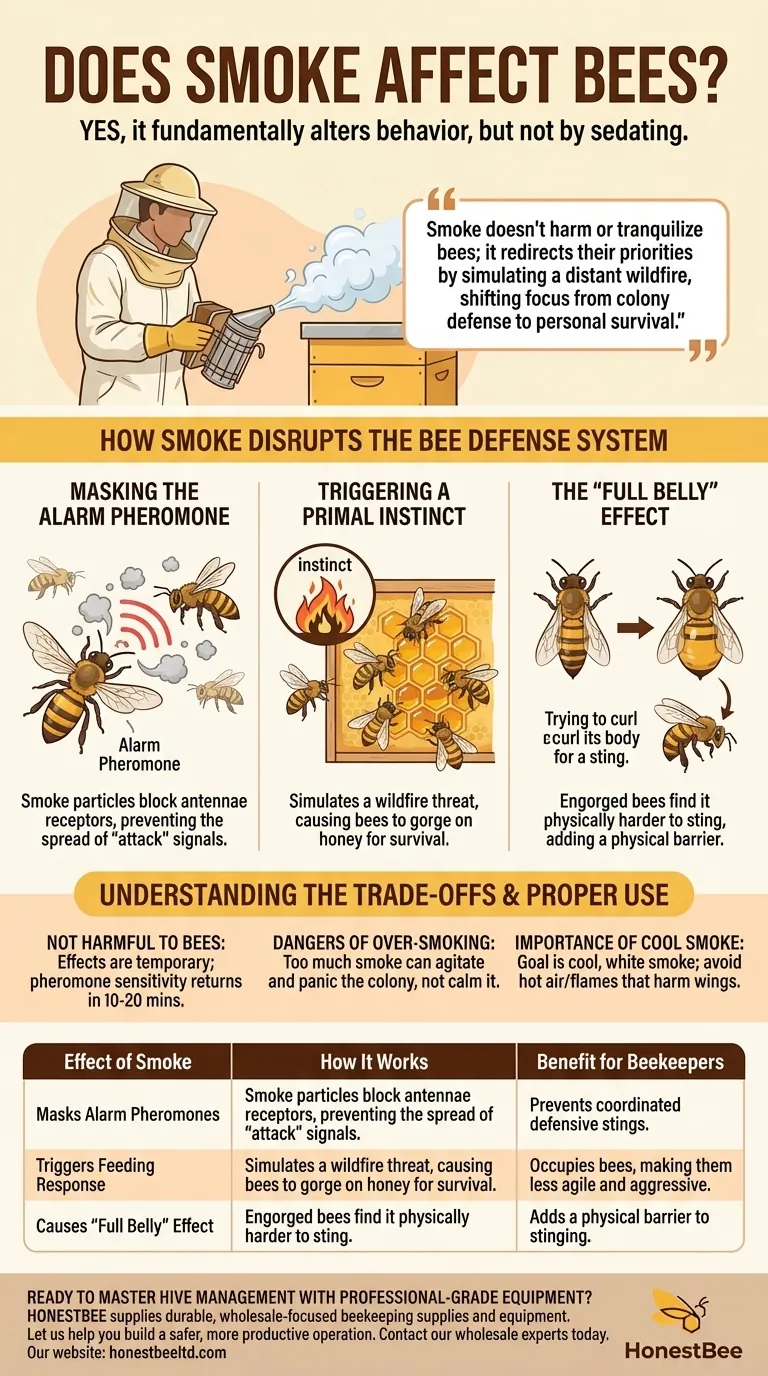
Related Products
- Stainless Steel Honey Bee Smoker Hive and Honeycomb Smoker for Beekeeping
- European Stainless Steel Bee Smoker for Honey Bee Hive
- Economy Galvanized Beekeeping Honey Bee Smoker for Wholesale
- Professional Bee Smoker with Elongated Spout and Durable Bellows for Beekeeping
- Premium Traditional Copper Bee Smoker with Bellows
People Also Ask
- What is a bee smoker and what is its primary purpose? Master Safe Hive Inspections
- What is a Smoker and how is it used in beekeeping? The Essential Tool for Calm, Safe Hive Inspections
- What happens to bees when they sense smoke? Unlock the Secret to Calm Hive Inspections
- What is a bee smoker and how does it work? Master the Tool for Calm, Safe Hive Inspections
- What is the purpose of a bee smoker and how should it be used? A Guide to Calm, Safe Hive Inspections








